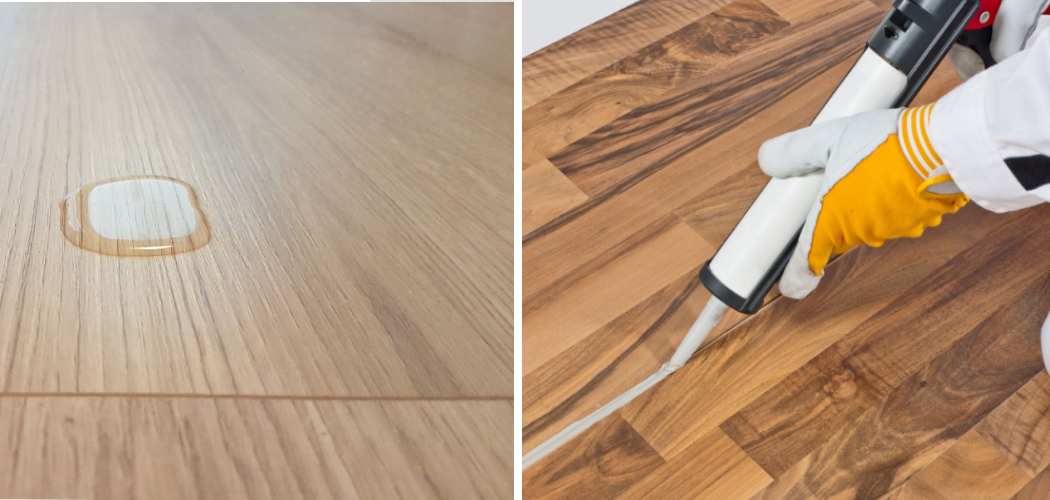Making your laminate flooring waterproof is important in creating a safe and durable living space. Although attractive and easy to maintain, laminate flooring is not naturally waterproof. If exposed to water or moisture for prolonged periods of time, it can swell, chip, buckle, or even break apart. As such, protecting this surface with a water-resistant sealant can ensure that your laminate flooring remains in top condition for years to come.
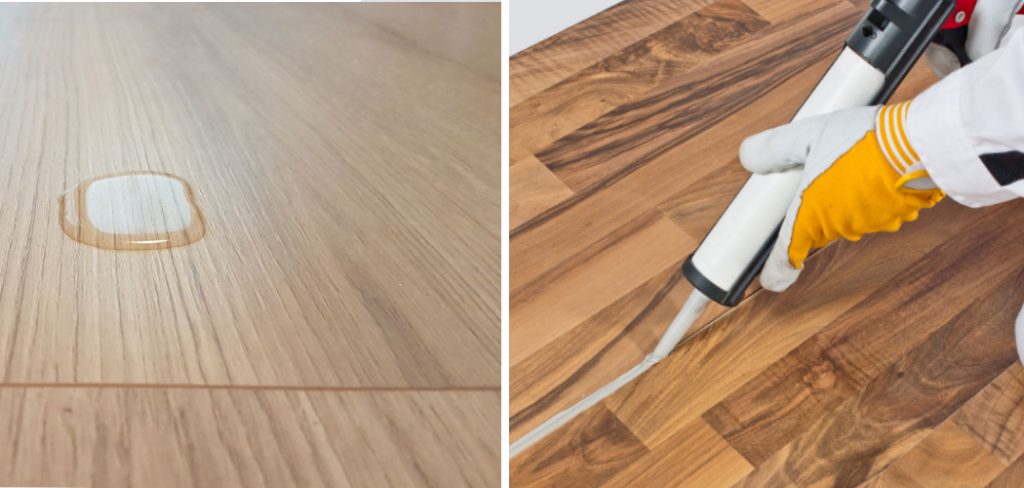
One of the main advantages of making laminate flooring waterproof is that it will increase its lifespan. By preventing water damage, you can significantly extend the life of your laminate floors. Waterproofing also helps protect your floor from everyday wear and tear, such as spills and scratches. In this blog post, You will learn how to make laminate flooring waterproof.
Step by Step Processes for How to Make Laminate Flooring Waterproof
Step 1: Inspect the Flooring
Before you start any waterproofing process, it is important to inspect the flooring for any loose or damaged areas. This will help you determine the best course for making your laminate flooring waterproof. Once you have inspected the flooring, thoroughly clean it to remove all dirt and dust. Make sure to remove any stains and spills that may have caused damage to the flooring.
Step 2: Seal the Edges
The edges of the laminate flooring are particularly vulnerable to water damage. To protect them, use a waterproof sealant along the edges of the planks and around areas where two planks meet. To make laminate flooring waterproof, you will need to use a sealant on the surface of the planks. This can be done using either a liquid sealer or a wax-based product. Make sure to follow the manufacturer’s instructions when applying the sealant.
Step 3: Allow for Drying Time
Allow the sealant to dry completely before continuing with the waterproofing process. Depending on the product you have used, this could take a few hours to days. Once the sealant has dried, it is time to apply a waterproof layer over the laminate flooring. You can use either vinyl or rubber sheeting for this step.
Step 4: Seal the Sheet
To ensure that the waterproof layer is secure, use a sealant to seal the edges of the sheet. This will help protect against water damage and make your laminate flooring waterproof. If you use vinyl or rubber sheeting, you must install grout lines between the planks. This will create an additional barrier against water damage and help keep your flooring waterproof.
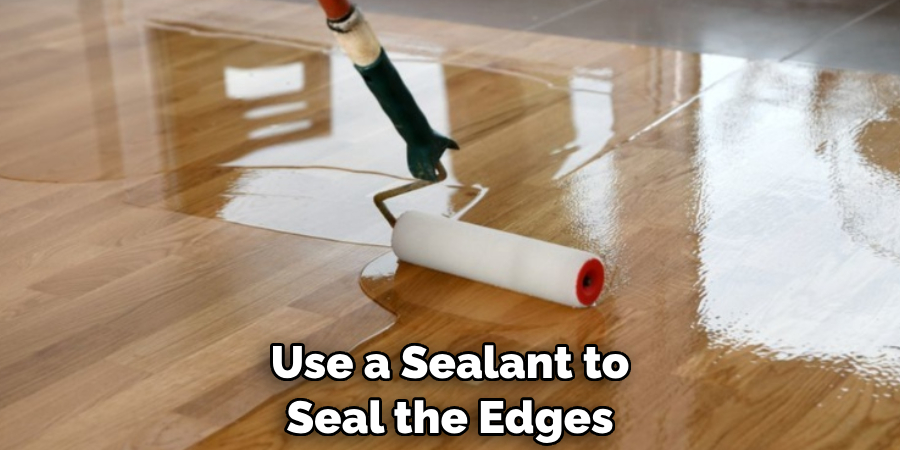
Step 5: Apply a Final Layer of Sealant
To protect the waterproof layer you have already applied, use a sealant to coat the surface again. This will ensure that no water can penetrate through cracks or crevices in the flooring. Once you have finished the waterproofing process, conduct a final check to ensure that your laminate flooring is completely waterproof. Also, regularly clean and maintain the flooring to ensure its lasting protection.
Following these steps will help make sure that your laminate flooring is waterproof and will last for many years.
Safety Tips for How to Make Laminate Flooring Waterproof
- Wear safety glasses and a dust mask to protect your eyes and lungs from airborne particles when sanding the laminate flooring.
- Unplug all electronic devices in the area while working with laminate flooring.
- Keep children and pets away from the work area while handling chemicals used for waterproofing.
- Ensure proper ventilation and use a fan to keep the air circulating while applying sealants.
- Use gloves and protective clothing when applying sealants, adhesives, or grout to prevent skin irritation or contact with hazardous substances.
- Read product labels carefully before application and follow all safety instructions provided by the manufacturer for making laminate flooring waterproof.
- Open windows or use a fan to ventilate the area after applying sealants, adhesives, and grout. Also, allow sufficient time for the products to fully cure before walking on them.
Following these safety tips when making laminate flooring waterproof will help you ensure the best results and avoid any potential harm to yourself, your family, and your home.
How Much Does It Cost to Waterproof Laminate Floors?
As with any project, the cost of waterproofing your laminate floor depends on several factors. The size and condition of your floor will affect how much it costs to waterproof it. Other choice considerations include the type of materials you use for the waterproofing and the skill level of the person installing them.
Generally speaking, DIY waterproofing kits can be purchased for usually around $50, but the total cost of your project depends on the materials and labor you choose. Professional installation could easily run into hundreds or even thousands of dollars.
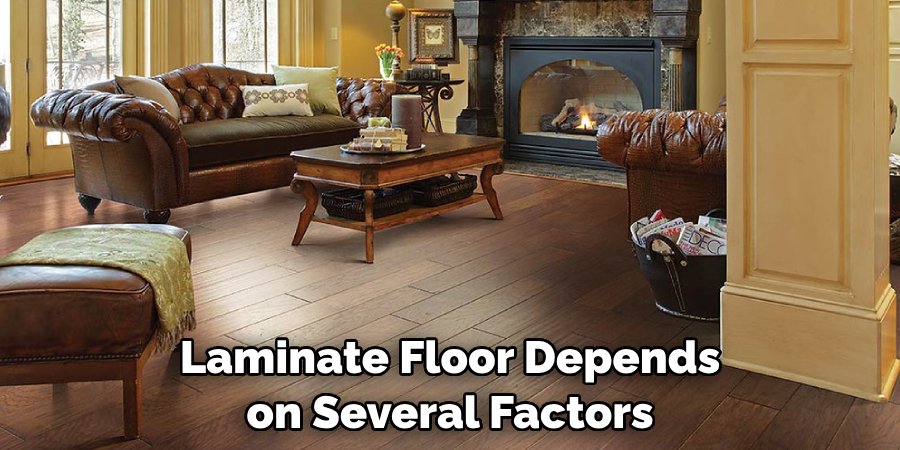
If you plan to complete the job yourself, it’s important to consider the tools and skills needed before getting started. To complete the project, you may need a caulking gun, sealant, and other supplies. Additionally, read any instructions carefully before starting work on your laminate flooring.
While waterproofing can save you time and money in the long run, improper installation could cause more harm than good. If you’re unsure how to waterproof your floor properly, consider hiring a professional.
What is the Best Way to Clean and Maintain a Waterproofed Laminate Floor?
Regular maintenance is the best way to keep your waterproofed laminate floor looking great and performing optimally. The following are some tips for cleaning and maintaining your laminate floor:
- Sweep or vacuum the surface regularly to remove dirt, dust, and debris.
- Use a soft cloth dampened with a mild detergent solution to clean up spills and messes.
- Clean the floor with a damp mop (without soap) to remove any remaining residue from the detergent solution.
- Dry the floor completely using a clean, soft towel or cloth afterward.
- Refrain from waxing, polishing, or buffing, as this will damage the waterproof sealant on the floor.
- Store cleaning products away from the flooring to prevent accidents or damage.
These tips will help ensure your waterproofed laminate floor looks great and lasts for years. If you have any questions about making laminate flooring waterproof, it’s best to consult with a professional before attempting any DIY projects.
What Are the Potential Risks of Not Sealing Laminate Flooring?
Not sealing laminate flooring can leave it vulnerable to water damage, which could eventually cause the planks to swell and warp. Warped laminate flooring is difficult and expensive to repair or replace, making a waterproof sealant an important part of maintaining your floor’s condition over time. Waterproof sealants will also prevent dirt and dust from collecting in the planks’ seams, making your flooring look old and dingy.
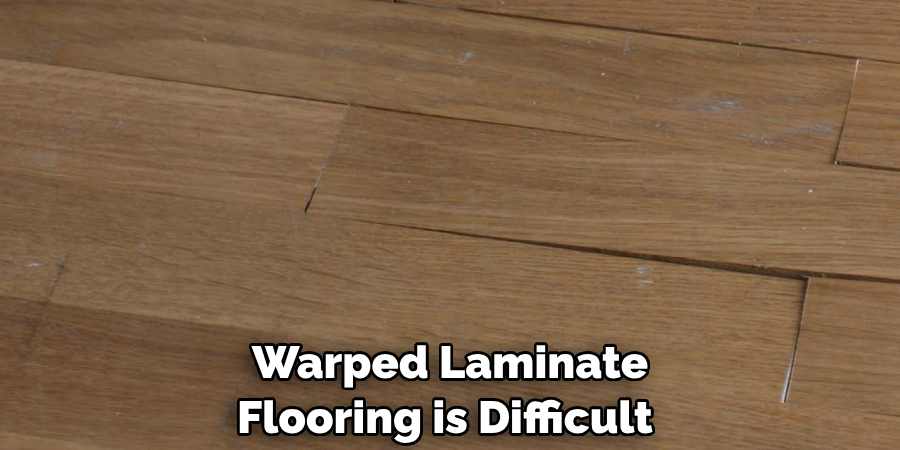
Additionally, without a sealant, laminate flooring is more likely to be stained due to spills or messes. Finally, not sealing your laminate flooring can void any warranty that comes with it. By following the steps outlined above and applying a waterproof sealant to your laminate flooring, you can protect it from water damage and keep it looking new for years to come. Doing so will require effort and expense up front, but the long-term benefits are well worth it.
Are There Any Potential Health Hazards Associated With Waterproofing Laminate Flooring?
When waterproofing your laminate flooring, it is important to consider potential health hazards. While waterproofing involves sealing your floor’s surface with a special chemical-based product, some people may experience skin irritation or respiratory issues when exposed to these substances.
When using products like polyurethane sealer, epoxy coating, or any other type of sealant, it is important to follow the manufacturer’s instructions and wear protective clothing, gloves, and a respirator mask.
In addition, it is essential that you properly ventilate any space in which you are waterproofing your laminate flooring. This will help reduce the risk of any side effects from exposure to chemical-based products.
Although waterproofing your laminate flooring can help to protect it from water damage, it is important to take the necessary precautions and follow safety instructions when using these products. Taking the time to properly waterproof and care for your floor will ensure you can enjoy its lasting beauty for many years.
What Are the Potential Benefits of Waterproofing Laminate Flooring?
Waterproofing your laminate flooring has several potential benefits. First, it can help protect your floor from water damage. Water can easily seep into the cracks and joints of laminate floors, causing them to warp or swell over time. You can keep this damage at bay for much longer by waterproofing them. Second, waterproofing your laminate floors can also help protect them from scratches, scuffs, and other forms of wear and tear.
A good quality sealant will create a protective barrier on the floor’s surface, making it more resistant to these types of damage. This can be especially beneficial if you have children or pets running around your home. Finally, waterproofing your laminate flooring can also help to prolong its life. By sealing it, you’ll protect the floor from dirt and other debris trapped in its crevices and joints over time. This will help keep your floors looking their best for years to come.
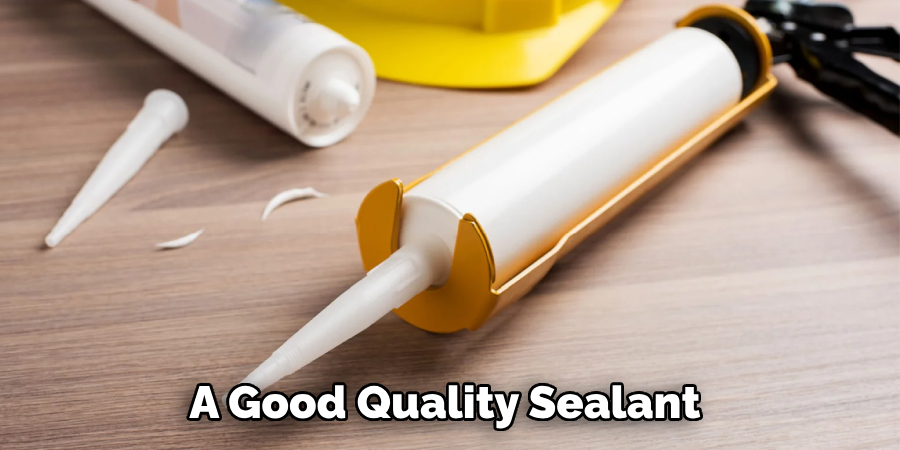
Conclusion
One of the primary disadvantages of making laminate flooring waterproof is that it can be expensive. Waterproofing materials can be costly and require professional installation if you are not confident doing the job yourself. This could add to your overall renovation costs significantly.
In conclusion, making laminate flooring waterproof is possible with the right products and techniques. By taking the time to properly seal, coat, and wax your vinyl plank or tile floors, you can protect them from water damage and stains for years to come.
With some extra effort, your floors will be waterproofed and ready for whatever life throws them. I hope this article has been beneficial in learning how to make laminate flooring waterproof. Make Sure the precautionary measures are followed chronologically.
